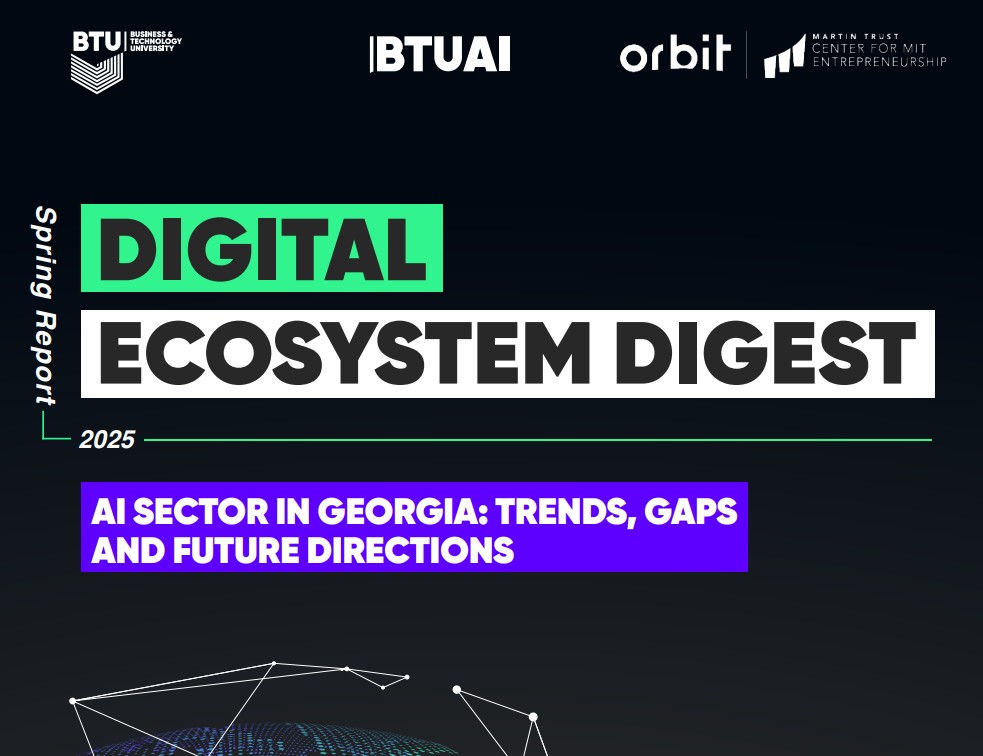Artificial intelligence is growing rapidly in Georgia, with visible progress in user adoption, business integration and startup activity. This report provides a broad overview of the evolving AI sector in the country and highlights key trends, strengths, and challenges across different dimensions. It draws on a combination of social statistics, original research data, online sources and direct communication with industry representatives.
The first section evaluates the country’s readiness for AI transformation using global indices. It analyzes how the country performs in areas such as government capacity, digital infrastructure and responsible AI governance – comparing Georgia to both regional neighbors and countries with similar income levels.
The second section focuses on the usage of generative AI tools among Georgian users. Based on recent data, it identifies the most popular platforms, such as ChatGPT and classifies users into six distinct profiles. The section also examines differences in usage patterns by gender and age. The third section explores the AI-related job market in Georgia. It reviews current demand for specific roles like machine learning engineers, AI data scientists, and AI product owners and highlights the dominance of international employers in this space. It also discusses required skills and background for these positions. The fourth section looks at how Georgian businesses are adopting AI. It notes that adoption is still at an early stage, mostly limited to large companies and concentrated in marketing, while other sectors
are beginning to explore new applications.
The fifth section reviews the local AI startup ecosystem. It maps out active startups, shows the dominant business models (B2B vs B2C) and presents success cases of Georgian startups. New and popular ideas for launching AI startups are also discussed.
Finally, the report examines AI adoption across different sectors, such as healthcare, finance, media, etc. It discusses key challenges in each, highlights sectors with the strongest activity and identifies niche areas where AI potential remains largely untapped.
